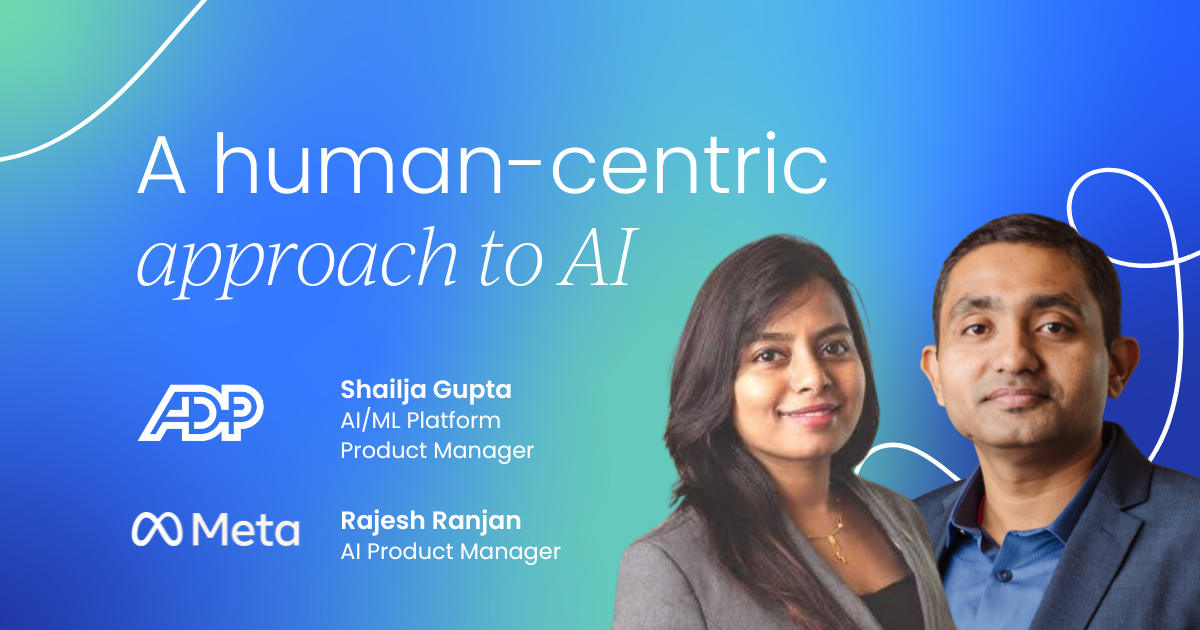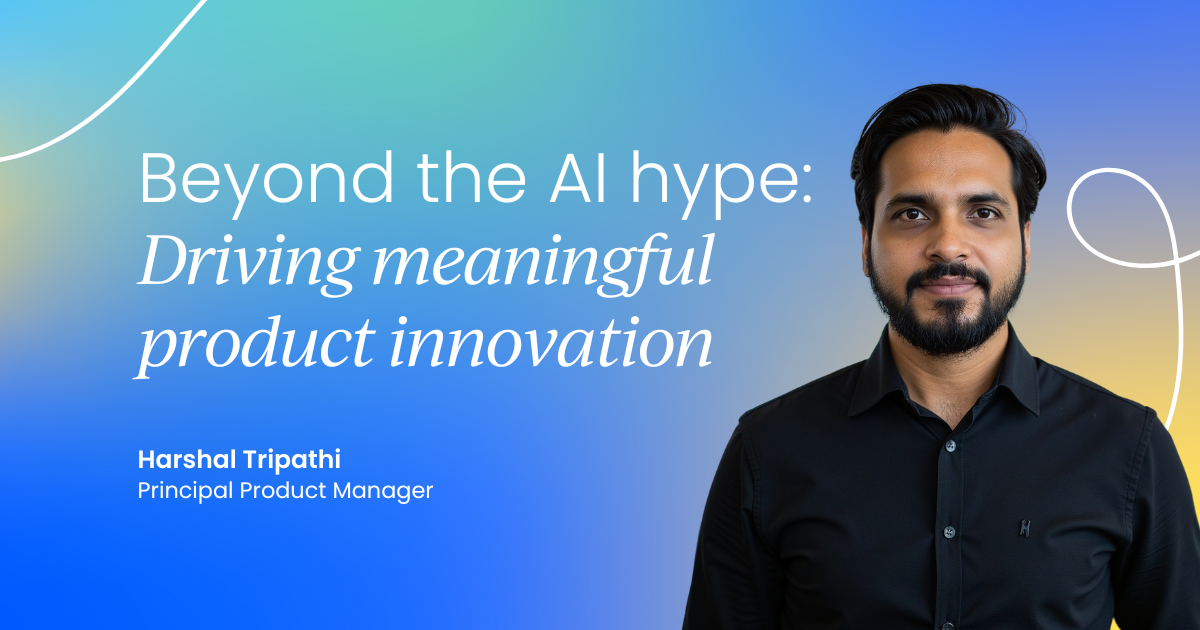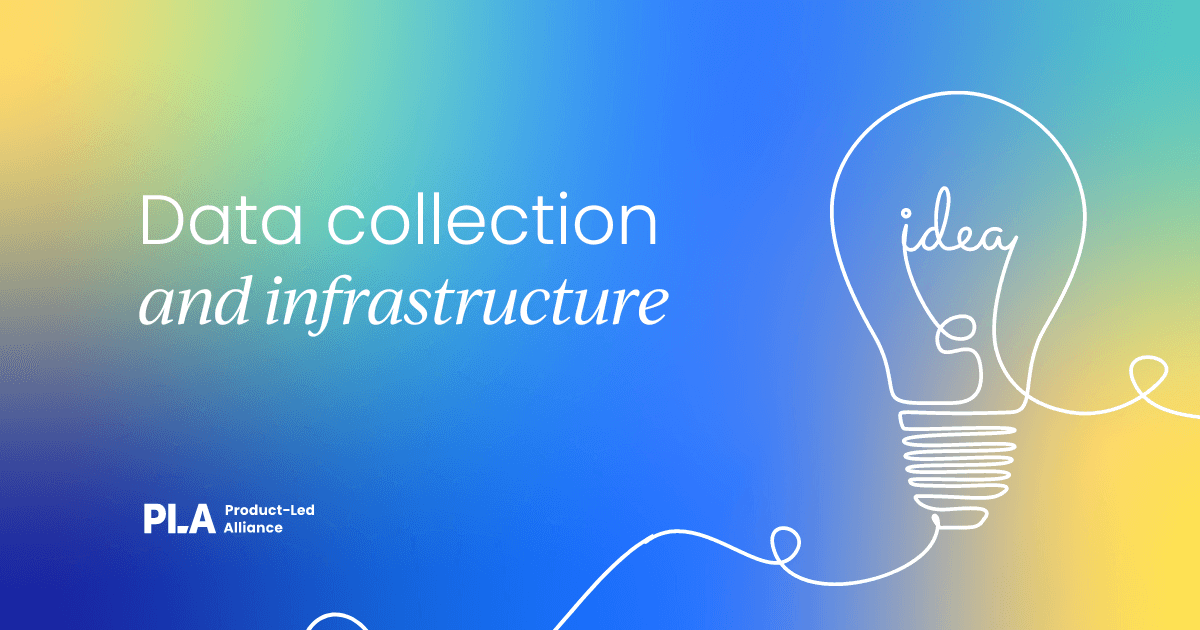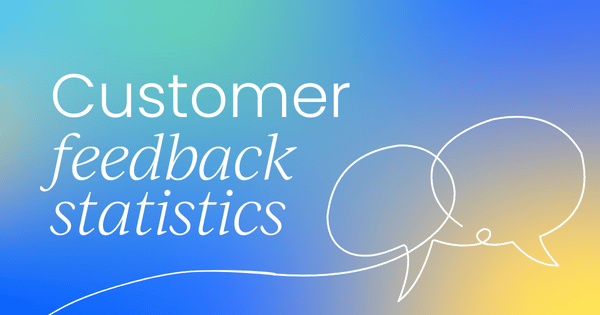AI is transforming customer service. From chatbots and intelligent routing to AI-powered recommendations, customer-facing AI has become one of the biggest areas for AI adoption.
At the same time, it’s surprisingly one of the easiest places to get it wrong. Many of us have experienced the frustration of interacting with a chatbot that just did not get it, leaving us scrambling to find a human to help.
While many enterprises have rapidly adopted AI, some reports indicate that a lack of understanding, coupled with failed implementations, are contributing to a concerning gap in expected improvements in customer satisfaction metrics.
With the rise of Generative AI, there is renewed hope that companies can finally deliver better, more human-like customer experiences while reducing operational costs. But in my experience, building AI products that genuinely improve customer service takes a lot more than just plugging in a new model.
Having spent years leading AI product development for enterprise support operations, I have learned a few lessons the hard way.
Here are six takeaways that can help anyone working on AI-powered customer solutions, and many of these insights apply well beyond customer support, to any AI product that converses with customers.
1. Prioritize high-impact, low-complexity use cases to build trust
One of the most common mistakes I have seen is trying to automate too much, too fast. Often, teams are eager to tackle complex, judgment-heavy customer interactions before they have built confidence in the system. This usually backfires, resulting in half-baked solutions that frustrate customers and increase escalations.
The smarter play is to start small.
Automate high-volume, low complexity tasks first. Delivering consistently accurate results in these areas builds credibility with both customers and internal stakeholders.
Once you prove the AI works in these simpler scenarios, it becomes much easier to get buy-in for tackling more complex problems later.
In one project, my team started with a frequent but complex email type for auto-compose, responding to customers who had ongoing issues with their PCs, cases where multiple back-and-forth conversations had already occurred, some solutions had been attempted, or the problem kept recurring.
This required pulling context from various sources, reviewing the full case history, assessing what had already been tried, and proposing an alternate solution. There were too many steps to get it right, which slowed progress and undermined stakeholder confidence.
We quickly pivoted to a simpler subset of this case, responding to new emails where little to no back-and-forth had occurred. This helped us rebuild trust with the stakeholders with more accurate and consistent performance.

2. AI should make agents’ lives easier, not harder
I cannot emphasize this enough: the best AI product in the world will fail if the interface makes an agent’s job more complicated.
In a previous project, my team noticed surprisingly low usage of an AI tool by agents, despite overwhelmingly positive feedback during the pilot. When we dug deeper, we discovered that once the tool was integrated with the CRM in production, it required several extra clicks to access. As a result, agents chose to ignore it altogether.
Studies on AI integration in workplaces corroborate that friction in workflow can lead to low adoption of AI by employees.
The key is to get the user experience right from the start.
Understand what agents actually need in their workflow, and design around that. Build quick prototypes, get them in front of real agents early, and adjust based on feedback. This saves time and effort by identifying usability issues before you spend months perfecting a model no one wants to use.

3. Don’t just fix customer issues, prevent them
AI in customer service should not just focus on resolving problems faster. It should also help prevent them from happening in the first place. This is one of the biggest missed opportunities I see in enterprise AI projects.
In fact, some reports suggest predictive and proactive support can significantly reduce inbound queries, with estimates suggesting reductions of 20-30%.
A proactive approach starts by mapping the customer journey and identifying pain points before they escalate into support tickets.
In one instance, I observed how introducing automated status updates, along with a link for customers to schedule or reschedule appointments directly from their inbox, significantly reduced contact volumes. Many customers were reaching out to agents to check on dispatch status or change appointments.
By providing this easy, self-service option upfront, customers could get the information they needed without contacting support. Small interventions like this can dramatically lower case volumes and improve customer satisfaction.

4. Use AI to augment agents, not replace them
Despite the hype, AI is not here to replace human agents.
According to Cisco Agentic AI Research, while 68% of customer interactions are expected to involve agentic AI within three years, 89% of respondents believe enterprises must combine human empathy with AI efficiency to optimize customer experience.
The goal should be to empower agents, not replace them.
For example, in one project, instead of building AI to tackle complex, high-emotion issues directly, we created a tool that summarized case history and surfaced relevant information in one place.
This allowed agents to quickly get up to speed, spend less time digging through systems, and more time providing empathetic, effective resolutions.

5. Having large data sets is not enough – quality matters
There is a tendency to assume that as long as you have a lot of data, your AI will perform well. In reality, poor data quality introduces bias, errors, and inconsistencies that ultimately erode customer trust.
IDC also highlights data governance and data security as top concerns and challenges for AI implementation.
I have seen how messy datasets can derail even the most promising AI projects. This example comes to mind: we were building a computer vision model to identify damage from images. We soon realized that our training dataset included poor-quality images – images taken from odd angles, blurry, and often incorrectly annotated.
This resulted in weak model performance. Once we addressed this by recollecting and validating high-quality images, AI’s performance improved significantly.
The long-term solution involves strong data governance and employee training. In the short term, you can improve results by sourcing validated data, preprocessing it to handle missing values, and removing obvious bias.
Also, remember that it is not enough to train on clean data. You need to keep it fresh after deployment through feedback loops, automated pipelines, and regular retraining.

6. AI should speak your brand’s voice
Another issue that often gets overlooked is ensuring AI-generated responses match your brand’s tone and personality. Customers expect a conversational, human-like tone that feels authentic to the brand they are engaging with. An overly robotic or generic response can ruin the customer experience.
To address this, I recommend training your model on brand-specific language and using prompt engineering to control tone, word choice, and formality.
OpenAI case studies show that well-implemented AI, with attention to consistent tone and style, can maintain customer satisfaction scores on par with human support in enterprise deployments.
While designing products to respond to customers across various channels, my team ensures responses follow brand guidelines, capture the agent persona by training on actual agent responses, and are tailored to fit each channel, for example, quick, informal replies for chatbots and more detailed messages for emails.
It’s also good practice to monitor customer feedback continuously and adjust prompt and training data as needed to improve the experience.

AI in customer service is a journey, not a quick fix
If there is one thing I have learned, it’s that implementing AI in customer service isn’t just about deploying new technology. It’s about improving both the customer and agent experience in a meaningful way.
The companies that see real results are the ones that pick the right problems to solve, focus on seamless integration, and iterate relentlessly. They understand that AI is a tool, a powerful one, but not a silver bullet.
Success comes from blending AI capabilities with human empathy, thoughtful design, and a commitment to continuous learning.




 Follow us on LinkedIn
Follow us on LinkedIn









